


| Spotlight: Biography |
| Smithsonian Office of Education |
| On these pages you will find brief biographies, images, and information from across the Smithsonian about men and women who have shaped our history and culture. |
| The "Lady Edisons" -- Women Inventors in the 20th Century |
| National Museum of American History |
| The history of women inventors is as long as that of their male counterparts. Sybilla Masters, for example, is often called the first woman inventor in the American colonies. In 1715, the English courts awarded a patent (albeit, to her husband Thomas) for a method of making cornmeal from maize--"a new invention," the patent clearly stated, "found out by Sybilla his wife." |
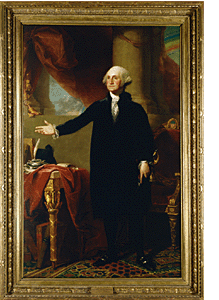
| George and Martha Washington; Portraits from the Presidential Years |
| National Portrait Gallery |
| Twenty-five portraits of George and Martha Washington made during Washington's years in office. Among them are paintings by Gilbert Stuart, Charles Willson Peale, Rembrandt Peale, and John Trumbull. |

| Franklin & His Friends |
| National Portrait Gallery |
In the eighteenth century, science was not yet a specialized, professional discipline; the term "scientist" was not even coined until 1833. And yet the physical and natural sciences had developed into well-defined bodies of knowledge. Franklin & His Friends documents the scientific accomplishments of these early men of science through their portraits. |
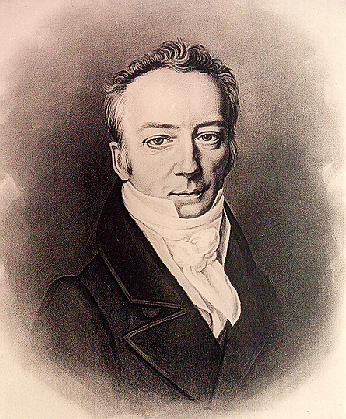
| James Smithson's Gift |
| Smithsonian Archives |
| James Smithson (1765-1829) was a wealthy English scientist who devoted his life to research. Although he had never visited the United States, he bequeathed his estate to found an establishment in Washington, D.C., dedicated to "the increase and diffusion of knowledge." |
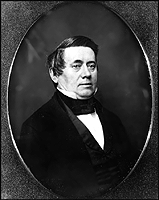
| Joseph Henry; Who Was He? |
| Smithsonian Archives |
| Henry was the inventor of the electric motor, the father of daily weather forecasts, and the preserver of the Smithsonian Institution. |
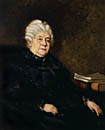
| The Seneca Falls Convention, July 19-20, 1848 |
| National Portrait Gallery |
| The seed for the first Woman's Rights Convention was planted in 1840, when Elizabeth Cady Stanton met Lucretia Mott at the World Anti-Slavery Convention in London, the conference that refused to seat Mott and other women delegates from America because of their sex. Stanton and Mott talked then of calling a convention to address the condition of women. Eight years later, it came about as a spontaneous event. |
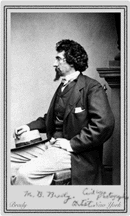
National Portrait Gallery |
The work of Mathew Brady (1823?-1896) spans the history of photography in nineteenth-century America, from early daguerreotypes on silver plates to majestic Imperial photographs to the tiny cartes-de-visite that were made by the millions at the time of the Civil War. |
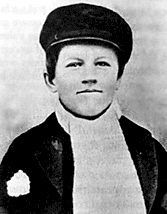
| Thomas Edison |
| National Museum of American History |
| Inventor of many things besides the electric light bulb: the Quaduplex telegraph system, electric pen, telephone transmitter, phonograph, motion picture machine (Kinetoscope), talking doll, and storage batteries. |

| Theodore Roosevelt; Icon of the American Century |
| National Portrait Gallery |
| Roosevelt's progressive ideas about social justice, representative democracy, and America's role as a world leader have significantly shaped our national character. Aided by scores of photographers, cartoonists, and portrait artists, his features became symbols of national recognition. |

| George C. Marshall; Soldier of Peace |
| National Portrait Gallery |
History will associate Marshall foremost as the author of the Marshall Plan. The idea of extending billions of American dollars for European economic recovery after WWII was not his alone, but Marshall, more than anyone else, led the way. |
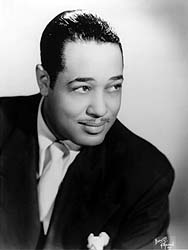
| Duke Ellington |
| National Museum of American History |
| Ellington (1899 - 1974) was known to the public primarily as a bandleader and writer of popular songs. Yet his achievements as a composer and orchestrator were even more significant; in fact, he was one of America’s foremost instrumental composers, a musical genius beyond category. |
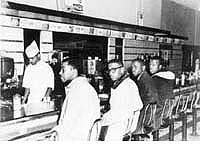
| Sitting for Justice |
| National Museum of American History |
| In 1960, if you were an African American, you were not allowed to sit here--the lunch counter of the F. W. Woolworth store in Greensboro, North Carolina. On February 1, 1960, four African American students sat at this counter and tried to order lunch.... |

| Picturing Hemingway; A Writer in His Time |
| National Portrait Gallery |
Ernest Hemingway has been called the single most influential American writer of the twentieth century. In his day, he achieved an unmatched literary and popular celebrity. This exhibition includes photographs, paintings, letters, first editions, manuscripts, and personal memorabilia. Also included are portraits of Hemingway's contemporaries, such as Gertrude Stein, Ezra Pound, John Dos Passos, and F. Scott Fitzgerald. |
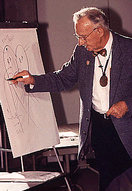
| Making Hearts Beat (Wilson Greatbatch) |
| National Museum of American History |
| This is the story of how a very average person developed into one of the country's greatest inventors with more than 140 patents. His most famous invention, called the cardiac pacemaker, keeps the rhythm of millions of heartbeats and helps people live longer and better. The pacemaker was the first electronic device ever surgically implanted inside a human body. |